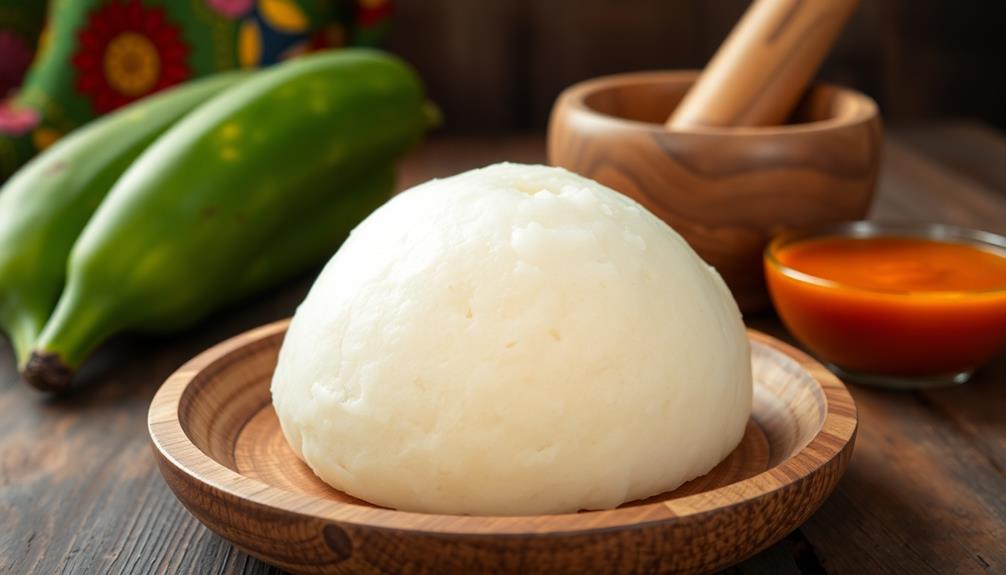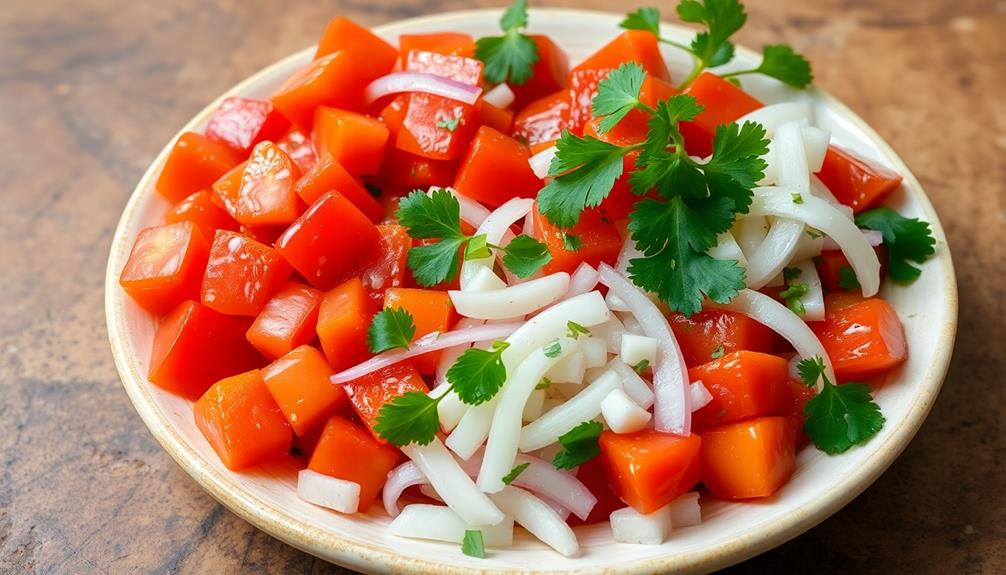You'll love koshari, Egypt's beloved national dish that combines lentils, rice, pasta, and a spicy tomato sauce topped with crispy fried onions. It's a hearty, vegetarian-friendly meal that's both delicious and budget-friendly. Imagine layers of fluffy rice, tender lentils, and al dente pasta, all smothered in a tangy tomato sauce and crowned with golden, crunchy onions. This comfort food has a fascinating history, blending Indian, Italian, and Egyptian influences. It's perfect for sharing with family and friends, and you'll find it everywhere from street vendors to fancy restaurants. There's so much more to discover about this tasty Egyptian staple!
History
Koshari's origin story is a fascinating blend of culinary influences. You'll find it interesting to know that this beloved Egyptian dish wasn't always a part of the country's cuisine. In fact, it's a relatively recent addition that came about during the 19th century!
The story goes that koshari was born from a mix of cultures. You see, when British soldiers were stationed in Egypt, they brought along their love for an Indian dish called khichdi. This lentil and rice dish caught on with the locals, who then added their own twist to it.
As time went on, more ingredients found their way into the mix. Pasta, likely introduced by Italian immigrants, became a key component. The Egyptians also added their own touch with the spicy tomato sauce and crispy fried onions.
Before long, koshari had evolved into the hearty, flavorful meal you know today. It's amazing to think that a dish born from such diverse influences has become a true Egyptian staple.
You'll find it everywhere, from street carts to fancy restaurants, loved by people from all walks of life.
Recipe
Koshari is a beloved Egyptian street food that combines a hearty mix of lentils, rice, pasta, and a spicy tomato sauce. This vegetarian dish isn't only filling but also budget-friendly, making it a popular choice among locals and tourists alike. Its origins can be traced back to the 19th century when Egypt was under British occupation, and it has since become a staple in Egyptian cuisine.
To prepare Koshari, you'll need a variety of pantry staples and fresh ingredients. The dish is typically made in stages, with each component cooked separately before being layered together. The result is a flavorful and textured meal that's both comforting and satisfying. While it may seem like a complex dish, with a little practice, you'll be able to whip up this Egyptian classic in no time.
- 1 cup brown lentils
- 1 cup long-grain rice
- 1 cup small pasta (like elbow macaroni or ditalini)
- 2 large onions, thinly sliced
- 4 cloves garlic, minced
- 2 cans (14.5 oz each) diced tomatoes
- 2 tablespoons tomato paste
- 1 teaspoon ground cumin
- 1 teaspoon ground coriander
- 1/4 teaspoon red pepper flakes
- Salt and pepper to taste
- Vegetable oil for frying
- Optional: 1 can chickpeas, drained and rinsed
To cook Koshari, start by preparing the lentils, rice, and pasta separately according to package instructions. While these are cooking, make the tomato sauce by sautéing half the minced garlic in oil, then adding the diced tomatoes, tomato paste, cumin, coriander, and red pepper flakes. Simmer for 15-20 minutes.
In another pan, fry the sliced onions until golden and crispy. Once all components are ready, layer them in a serving dish starting with rice, then lentils, pasta, and chickpeas if using. Top with the tomato sauce and crispy onions.
For the best results, make sure not to overcook the pasta and lentils, as they should retain some texture. The crispy onions can be made in advance and stored in an airtight container to save time. If you prefer a spicier dish, increase the amount of red pepper flakes or add a dash of hot sauce to the tomato sauce.
Koshari can be served immediately or at room temperature, making it an excellent option for meal prep or picnics.
Cooking Steps
Get ready to cook up a tasty Egyptian treat!
You'll start by preparing the main components: fluffy rice, tender lentils, and perfectly cooked macaroni.
Then, you'll whip up a spicy tomato sauce and crispy fried onions before layering everything together for a mouthwatering dish that'll transport you straight to the streets of Cairo.
Step 1. Cook Rice Until Fluffy

To begin the rice cooking process, you'll need a medium-sized pot with a tight-fitting lid. Start by rinsing your rice in cold water until the water runs clear. This step helps remove excess starch, making your rice fluffier. Once rinsed, drain the rice well.
Next, add the rice to your pot along with the right amount of water. For most types of rice, you'll use a 2:1 ratio of water to rice. Don't forget to add a pinch of salt for flavor!
Now, bring the water to a boil over high heat. You'll see bubbles forming and rising to the surface.
When it's boiling, give the rice a quick stir, then reduce the heat to low and cover the pot with the lid. Let it simmer gently for about 18-20 minutes. During this time, you'll notice the water being absorbed and the rice becoming tender. Resist the urge to peek too often, as this can let steam escape and affect the cooking process.
After the time's up, remove the pot from heat and let it sit, covered, for another 5-10 minutes. This resting period allows the rice to absorb any remaining moisture and become perfectly fluffy.
Step 2. Prepare Lentils and Macaroni
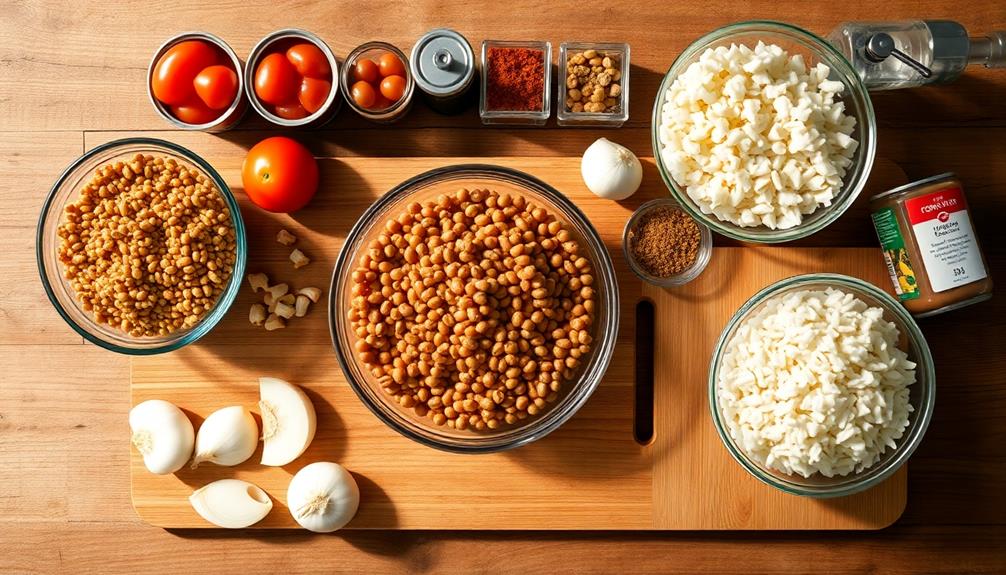
While the rice is cooking, it's time to prepare the lentils and macaroni. First, rinse your lentils in a colander under cool running water. Make sure you've got all the dirty bits out!
Then, pop them into a pot with plenty of water and bring it to a boil. Once it's bubbling away, turn down the heat and let the lentils simmer until they're tender but not mushy.
Now, let's tackle the macaroni! Fill another pot with water, add a pinch of salt, and bring it to a rolling boil. Toss in your macaroni and give it a good stir.
Keep an eye on it and test a piece every now and then. You want it to be al dente – that means it should still have a bit of bite to it. When it's just right, drain the macaroni in a colander.
While your lentils and macaroni are cooking, you'll start to smell all the delicious aromas filling your kitchen. It's like a preview of the yummy koshari you're about to enjoy!
Step 3. Prepare Spicy Tomato Sauce
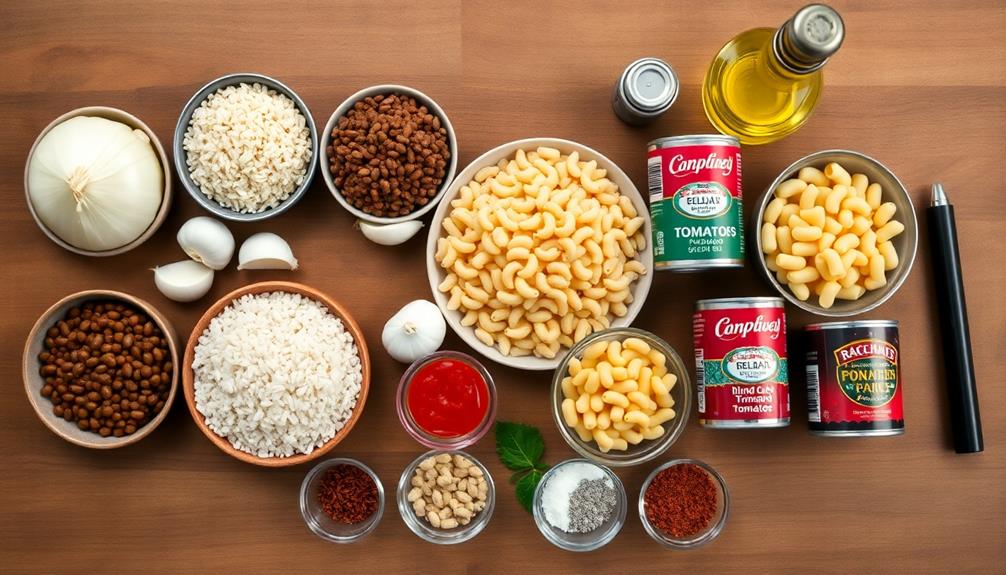
Along with the other components, the spicy tomato sauce is a crucial element of koshari. To prepare this delicious sauce, you'll need ripe tomatoes, garlic, vinegar, and a blend of aromatic spices.
Start by heating some oil in a pan and sautéing minced garlic until it's golden and fragrant. Then, add your diced tomatoes and let them simmer until they're soft and juicy.
Now, it's time to spice things up! Sprinkle in some cumin, paprika, and a pinch of chili powder for that perfect kick. Don't forget to add a splash of vinegar for a tangy twist.
As the sauce bubbles away, you'll notice the kitchen filling with mouthwatering aromas. Keep stirring occasionally, crushing the tomatoes with your spoon to create a smooth consistency.
After about 15 minutes, your sauce should be thick and bursting with flavor. Taste it and adjust the seasoning if needed. Remember, this sauce is meant to be bold and zesty, so don't be shy with the spices!
Once you're happy with the taste, remove it from the heat and let it cool slightly before serving over your koshari.
Step 4. Make Crispy Fried Onions
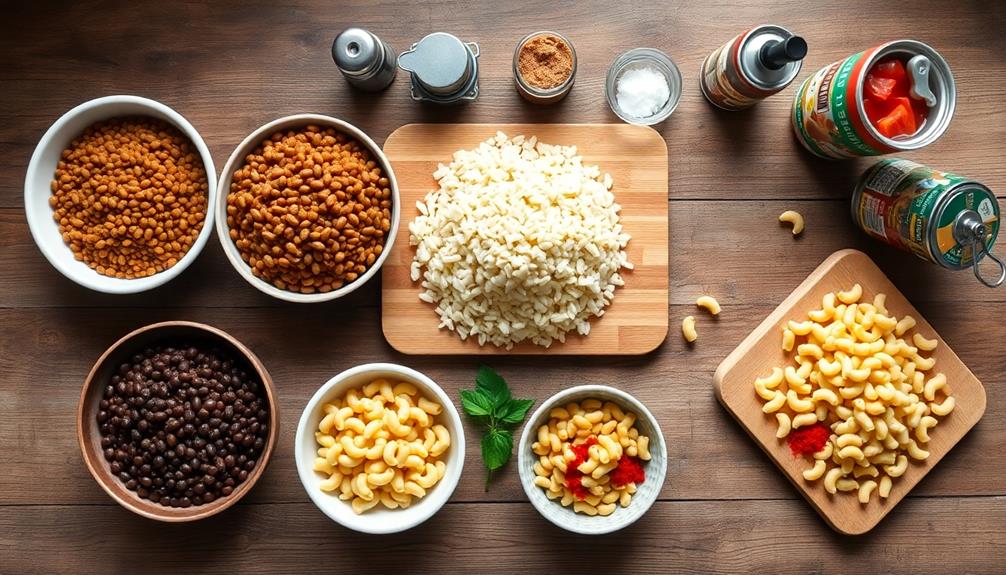
Now that your spicy tomato sauce is ready, it's time to focus on another key component of koshari: crispy fried onions. These golden, crunchy delights will add a burst of flavor and texture to your dish.
Start by peeling and thinly slicing two large onions. The thinner you slice them, the crispier they'll become!
Heat about 1/2 cup of vegetable oil in a large skillet over medium-high heat. Once the oil is hot, carefully add the onion slices in batches. Don't overcrowd the pan, as this will make it harder for them to crisp up.
Watch as the onions sizzle and dance in the oil, turning a beautiful golden brown. Stir them gently with a slotted spoon to guarantee even cooking. After about 5-7 minutes, when they're crispy and golden, remove them from the oil and place them on a paper towel-lined plate to drain excess oil.
Sprinkle a pinch of salt over the onions while they're still hot. Repeat this process until all your onions are perfectly crispy and ready to top your delicious koshari!
Step 5. Layer and Serve Dish

As you've prepared all the components, it's time to assemble your koshari. Start by grabbing a large serving bowl or platter.
First, spread a generous layer of cooked rice at the bottom. Next, add a layer of pasta, mixing it gently with the rice. Spoon the lentils over the rice and pasta mixture, creating a hearty base.
Now, it's time for the flavorful toppings! Drizzle the spicy tomato sauce over the lentils, letting it seep into the layers below. Sprinkle a handful of chickpeas across the surface, adding pops of texture and protein.
Finally, crown your koshari with a liberal amount of those crispy fried onions you made earlier.
When you're ready to serve, place the bowl in the center of the table. Encourage everyone to dig in, mixing the layers as they scoop out their portions.
The combination of textures and flavors is truly delightful – you'll taste the fluffy rice, tender pasta, earthy lentils, tangy tomato sauce, and crunchy onions in every bite.
Don't forget to have extra tomato sauce on the side for those who like it extra spicy!
Final Thoughts
Koshari's enduring popularity in Egypt speaks volumes about its cultural significance and culinary appeal. It's a dish that brings people together, from busy street corners to family dinner tables. When you're in Egypt, you'll find koshari everywhere, and it's easy to see why. The mix of flavors and textures is simply irresistible! And it’s not just the combination of rice, lentils, macaroni, and fried onions that makes koshari so beloved. The addition of tangy tomato sauce and spicy chili paste takes it to another level. People of all ages and backgrounds can’t seem to get enough of this hearty and satisfying dish. For those looking to explore more of Egypt’s rich culinary tradition, trying an authentic Egyptian molokhia recipe is a must.
As you've learned, making koshari is a labor of love. It takes time to prepare all the ingredients, but the result is well worth it. You'll be rewarded with a hearty, satisfying meal that's both delicious and budget-friendly. Plus, it's a great way to use up leftover rice and pasta.
Next time you're looking for a new recipe to try, give koshari a go. You'll be joining millions of Egyptians in enjoying this beloved national dish. Who knows? It might just become your new favorite comfort food.
Frequently Asked Questions
Is Koshari Suitable for Vegetarians or Vegans?
Yes, you'll find koshari suitable for both vegetarians and vegans. It's a plant-based dish made with lentils, rice, pasta, and topped with tomato sauce and fried onions. You can easily enjoy it without any animal products.
How Long Can Leftover Koshari Be Stored in the Refrigerator?
You can safely store leftover koshari in your refrigerator for up to 3-4 days. Make sure you keep it in an airtight container. For the best taste and texture, you should reheat it thoroughly before eating.
Are There Regional Variations of Koshari Within Egypt?
You'll find regional variations of koshari throughout Egypt. In Alexandria, you might taste a spicier version, while in Upper Egypt, it's often made with more lentils. Some areas add garlic or use different pasta shapes.
What Are Some Common Side Dishes Served With Koshari?
You'll often find pickled vegetables, such as turnips or peppers, served alongside koshari. You might also enjoy a spicy tomato sauce, fried onions, or a garlic vinegar sauce as common accompaniments to this hearty dish.
Can Koshari Be Prepared in Advance for Large Gatherings?
You can definitely prepare koshari in advance for large gatherings. It's ideal for meal prep. Cook components separately, store them in the fridge, and reheat when needed. You'll save time and still serve a delicious meal.





